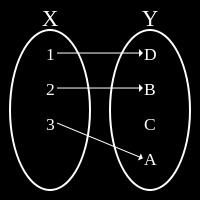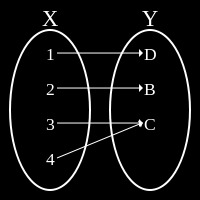[4] Set Theory
By popefucker
What is Infinity?
That’s a really hard question to answer.
If you ask people on the street, they’ll probably tell you it’s a number. Many people use it that way; a lot of us remember telling our siblings “Oh yeah? Well I have infinity plus one!” Luckily, our ape-brains tell us, you’ll never need to comprehend infinity; it’s so vast that you’ll never see all of it, no matter what you do.
Let’s assume infinity is a number. Let’s assume it is the biggest number, such that all numbers are less than infinity, except infinity itself. We can express that mathematically pretty easily (
here refers to the real numbers, which is basically the same as ‘all numbers’):
Statement 1:

Let’s say another obvious thing: when you add two numbers together, you get another number. This can be proved pretty easily by induction.
Statement 2:
And lastly, a blinding flash of the obvious. When you add a positive number to something it gets bigger.
Statement 3:
If you paid a lot of attention in math class, this part will be obvious. Now we’ll say: if all of those are true, then what’s ? We know it has to be real because of statement 2, so we know it has to be less than or equal to infinity because of statement 1. But, we also know it has to be greater than because of statement 3. Thus, we’ve found a contradiction. Infinity cannot be a number, at least not in any number system that follows the rules of the real numbers.
So what is infinity if it’s not a number? To answer that, you have to start talking about sets.

Sets
Sets are pretty easy to understand, in their basic form. They’re just groups of numbers. is a set. And, as you can see, it as three members: , , and . Easy.
They get a little harder when you start talking about infinite sets. Let’s talk about the set of natural numbers, . A natural number is one of two things: , or the sum of and another natural number. It’s clear that no matter how many natural numbers you have, you can always make another one by adding . So, we say that the set of natural numbers . is infinite – that is, there is an infinite amount of things in the set. We call the amount of things in a set its cardinality, and it’s important to note that the cardinality of a set doesn’t need to be a number, only the set’s elements themselves need to be.

By definition, the set of natural numbers has a cardinality of (Aleph-null), which we use as a baseline. However, there are bigger infinities than which blows our entire concept of a single right out of the water. How can one infinity (or infinite cardinality, more accurately) be ‘bigger’ than another?
The way we compare infinite cardinalities is by looking for something called an injection. An injection (or injective function) is some sort of way of mapping every member of one set onto exactly one member of another set. If you can find an injection from an infinite set to the set of natural numbers, then we say it is countable (don’t read into that word, it is just a convention). A bijection is a special kind of injection that is an exact one-to-one correspondence between two sets. If you can find a bijection between a set and the natural numbers, then we say that that set also has a cardinality of . It is very likely (but not known) that is the smallest possible infinite cardinal.
A surprisingly large amount of known sets have cardinality , and many of them have very tricky bijections (such as the proof that the rationals are countable). However, one infinite set that does not have a cardinality of is the set of all real numbers , which we saw when proving that infinity is not a number.
The Diagonal Argument
(or “the continuum”) includes every number that does not have an imaginary component. It includes every number that can be defined, and many more that cannot. The proof that has cardinality greater than is very simple. Suppose you took an infinite set of real numbers, and mapped them to the natural numbers, like so:
The actual numbers don’t matter, but they have to be non-terminating. However, now that you have your infinite list, you can construct a new non-terminating number by taking the ‘th digit from the ‘th element in the list, and making the ‘th digit of the new number different. Thus, the new number will always have at least one different digit to every number already in the list, and it cannot be in the list. Since the list was already mapped perfectly to the natural numbers, the set of all real numbers (which includes the new number) must be larger than the set of all natural numbers, and thus must have a cardinality greater than . So, some infinities are greater than others, and there are an infinite amount that are greater still.
So, did we really figure out what infinity is? Well, no, not really, but we found out it’s even more confusing than we thought. I guess sometimes that’s the only victory you can claim.